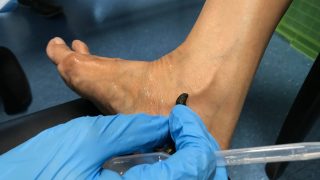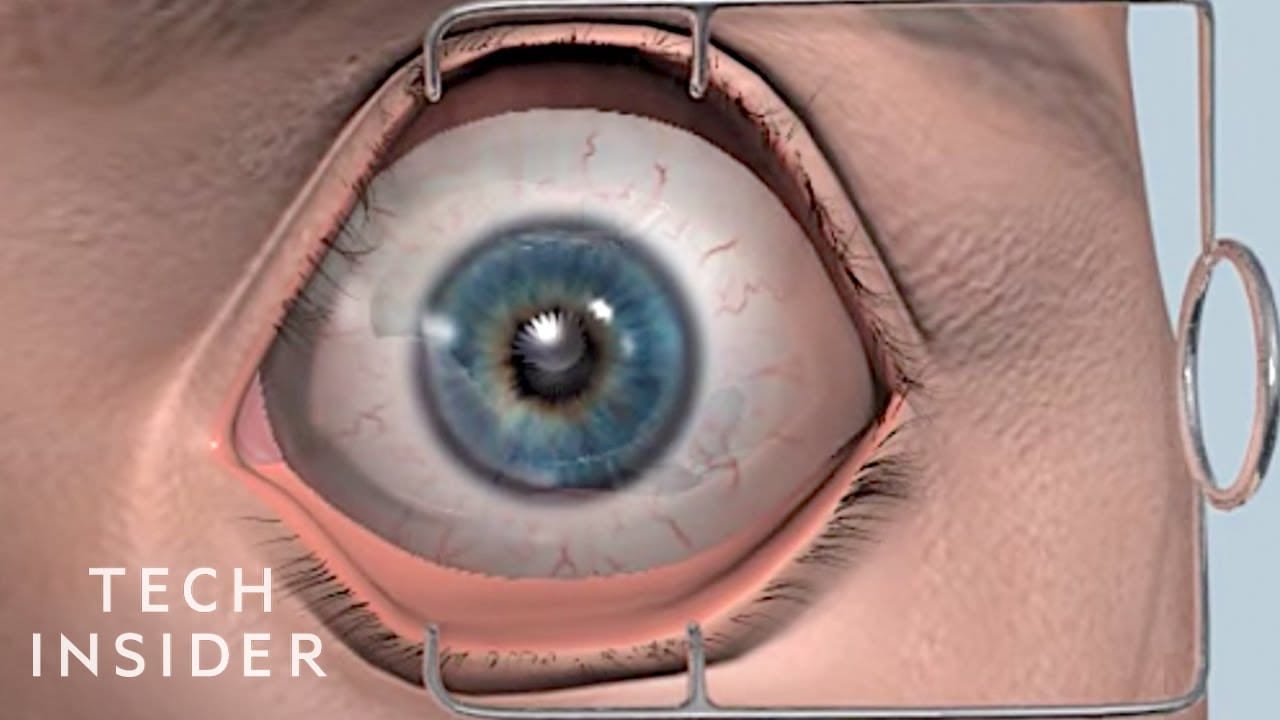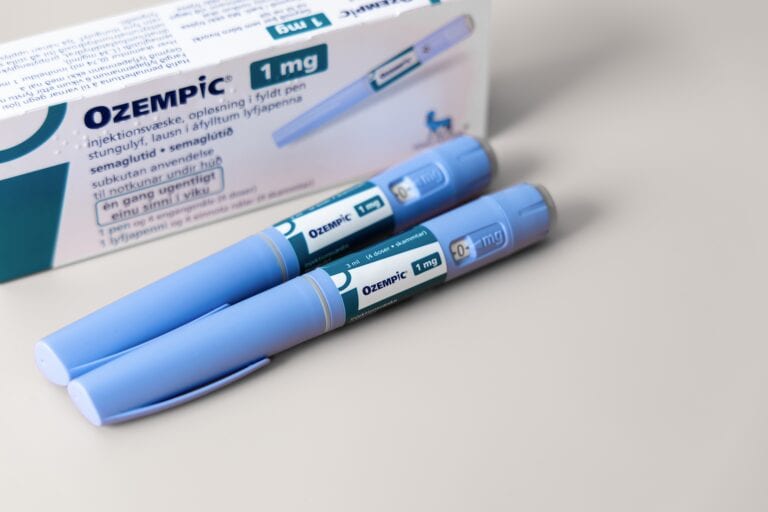Robotic Hernia surgery has revolutionized the surgical treatment of hernias. Hernias are one of the most common surgical problems, with about 25% of men and 4-5% of women developing one of many types, including inguinal, umbilical (belly button), femoral, and incisional.
I recently had Robotic Hernia Surgery after putting it off for many years. Hernias can be a nuisance that can often become painful and dangerous, so I finally decided to have this new procedure. Fortunately, my practice partner in San Diego, Dr. Shawn Bench, has done hundreds of robotic hernia surgeries, so I was confidant my hernias would be put in their place! And they were!
But before showing my surgery, let’s discuss what hernias are and how they have been treated in the past.
Table of Contents
ToggleWhat Is A Hernia?
A hernia is caused by a weakness or defect in the abdominal wall, allowing internal organs like intestine, bladder, or fat to protrude through.
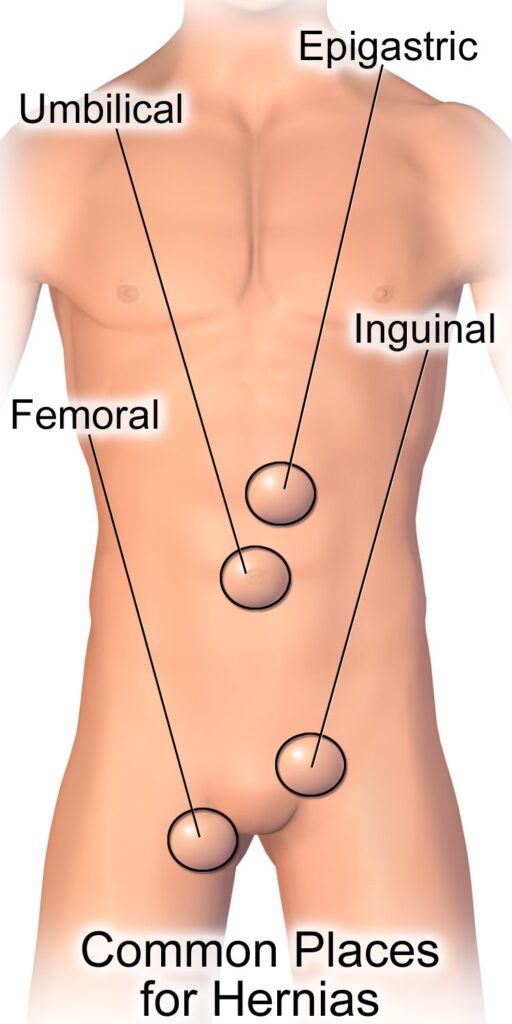
Hernias can be large or small, depending on the size of the defect. They can simply produce an unsightly bulge, be uncomfortable, or actually cause pain and have dire consequences.
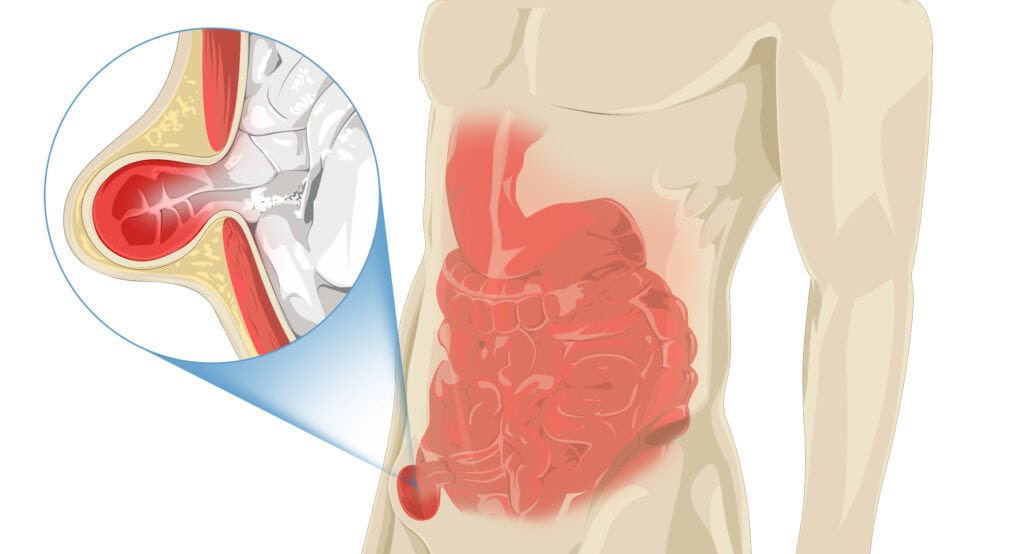
A “reducible” hernia is a bulge of tissue that can easily be pushed back into the belly . These can be a nuisance but are usually not dangerous.
A “non-reducible” or “Incarcerated” hernia occurs when the intra-abdominal contents–be it bowel, fat, or other organ–get stuck outside the belly and under the skin. This can be tender and painful and needs surgery sooner rather than later.
Incarcerated hernias can become “strangulated” hernias, especially if the abdominal wall defect is small, when the blood supply to the tissue stuck in the hernia is pinched off. This requires emergency surgery to prevent necrosis or death of the tissue.
Brief History Of Hernia Repair
For many years, hernias were repaired from the “outside.” An incision was made over the hernia, the defect exposed, the tissue pushed back into the abdominal cavity, and the tissues repaired with or without a supportive mesh material. This was a fairly painful procedure requiring 2-3 weeks of convalescence.
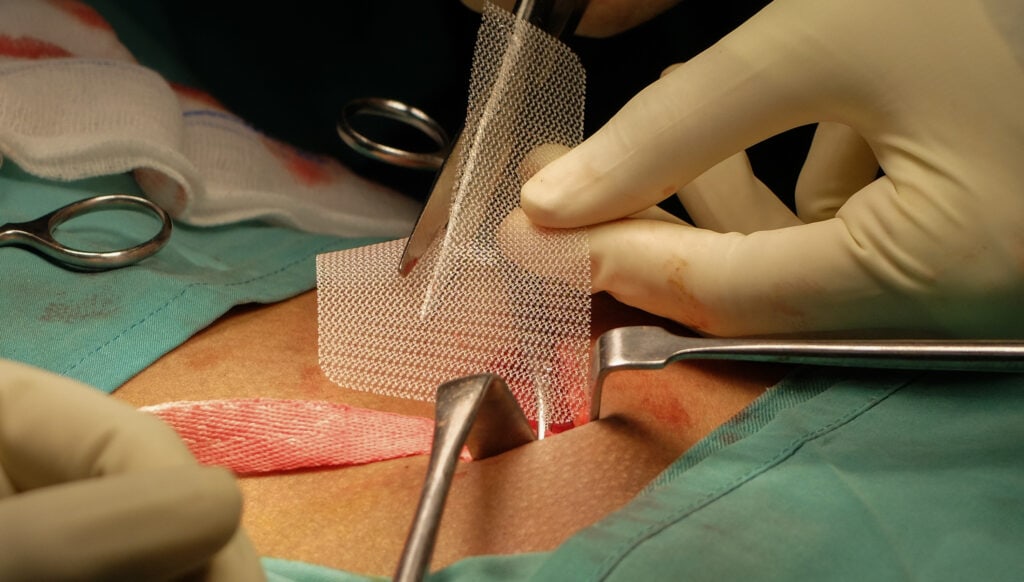
The recurrence rate (hernia comes back) for procedures without the use of mesh ranged from 5%-30% depending on a variety of factors like surgeon skill, tissue quality, and infection.
The recurrence rate if mesh was used ranged from 0.5% to 7%, a significant improvement.
Another leap in hernia repair surgery was the introduction of laparoscopic hernia repair. This procedure involves placing a few incisions on the belly to allow passage of a camera and instruments inside the abdomen to repair the hernia defect from the inside.
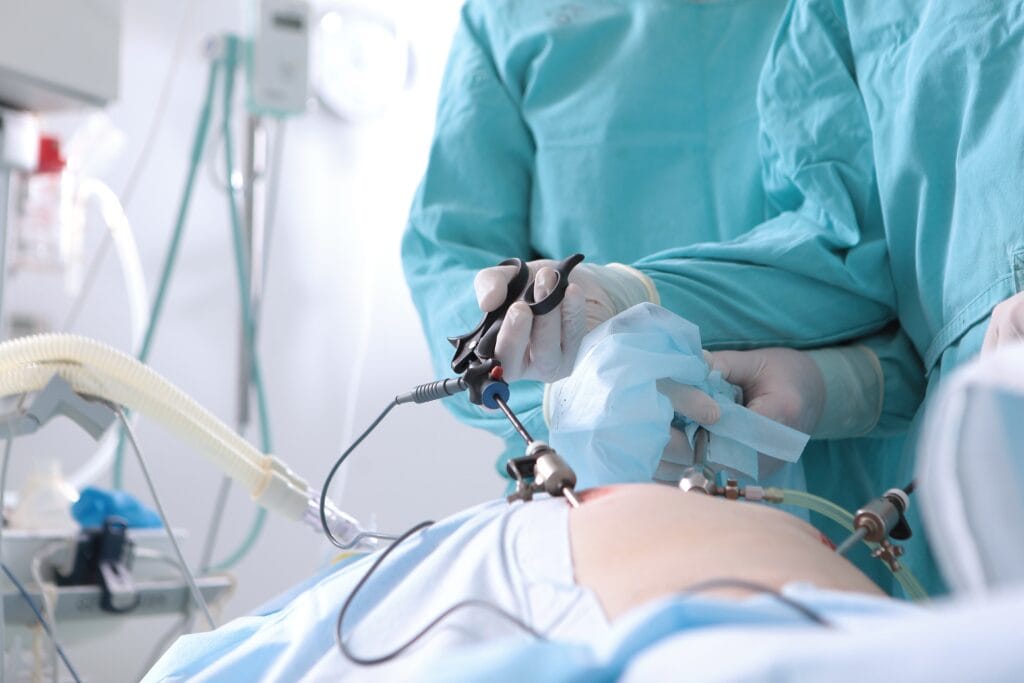
Mesh is also used to reinforce the weak tissue. The recurrence rate for hernia repair laparoscopically averages less than 2-3%, depending on the type of hernia and other factors such as age and medical condition.
With this approach, there is much less pain, downtime, and usually is an outpatient procedure.
And Now, Robotic Hernia Surgery!
So, don’t be afraid that C3PO or Robbie the Robot is going to march into the operating room to do your surgery. Robotic Hernia Surgery is probably better described as Robotic-assisted surgery.
Robotic Hernia Surgery is actually laparoscopic hernia repair done remotely, in that after placing all the entry ports, camera, and instruments, the surgeon controls those devices via a console with control arms (think modified joysticks) and a high definition video screen. The instruments move at the surgeon’s command via small motors in the control arms.
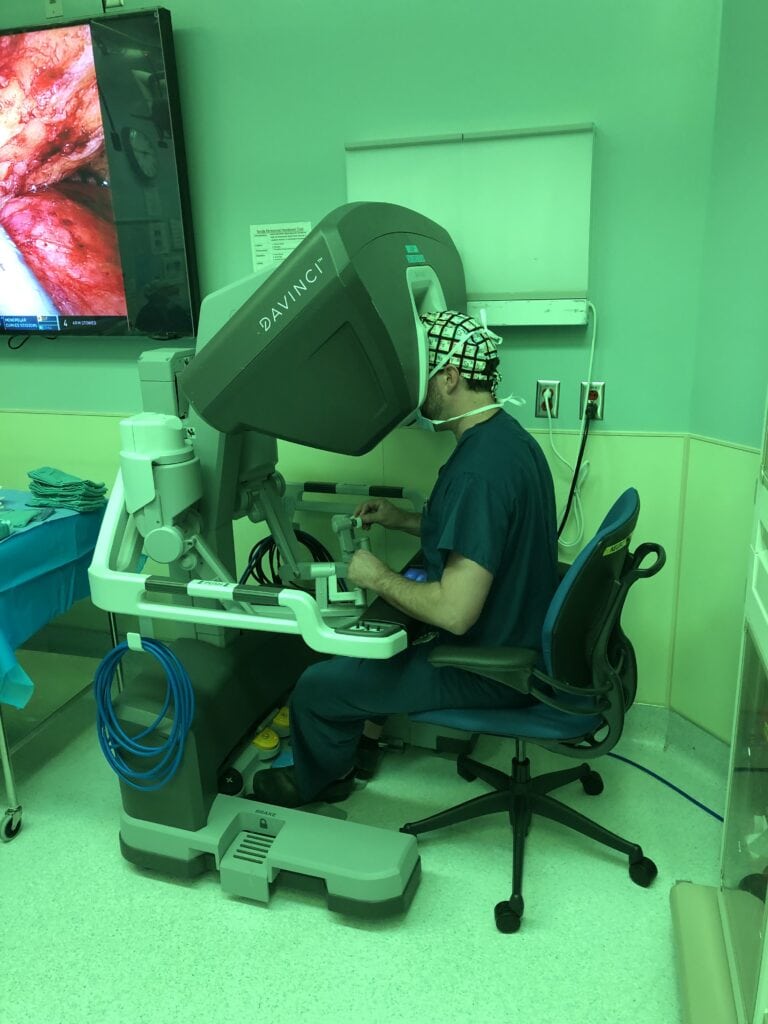
The HD camera produces magnified ultra clear images for easy identification of nerves, blood vessels, and other vital structures to avoid injury. The multidirectional joints on the robot arms allows the surgeon to move an instrument in any direction for dissecting and sewing.
My Robotic Hernia Surgery Experience
I lived with hernias for over 20 years because they didn’t bother me.
Until they bothered me.
I had inguinal hernias on both sides and an umbilical hernia, and they were starting to become uncomfortable with exercise and at the end of a long day at work. So I put aside my philosophy that surgery was for patients, not surgeons, and discussed robotic hernia surgery with my surgical partner.
I was concerned about downtime, postoperative pain, and other risks, and after a thorough explanation, I was ready…
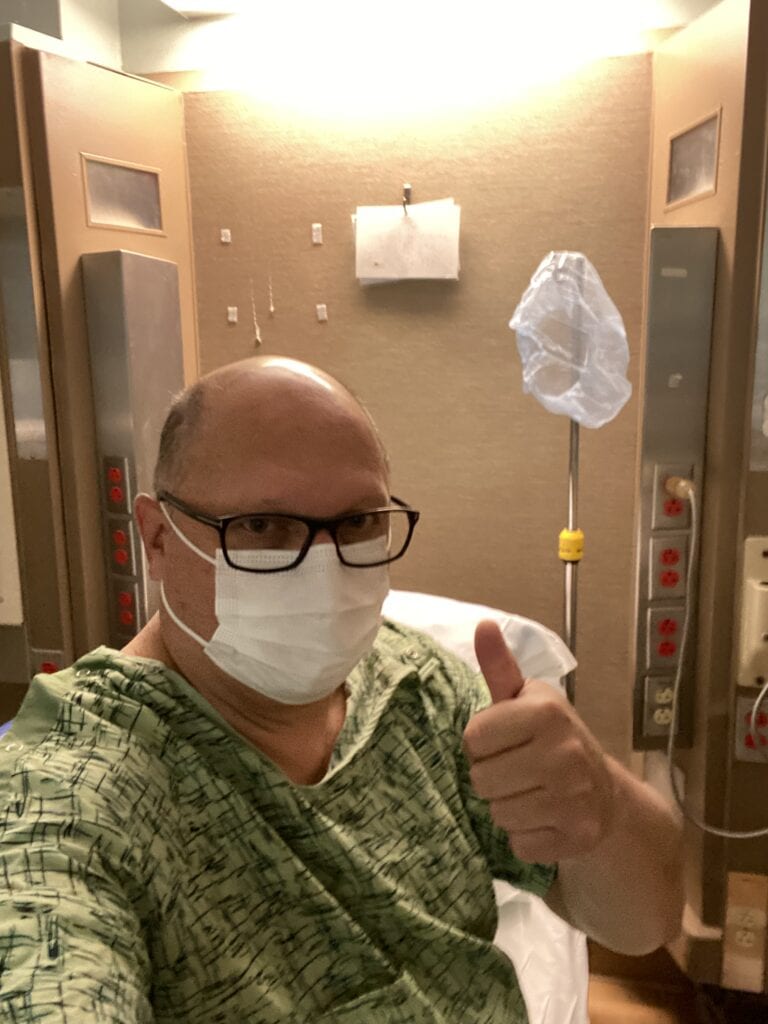
Surgery can be a scary thing, especially when it’s elective, and I spend everyday telling MY patients about the safety and low risks, but when it’s you, well, that’s a different matter. And yet, it was as advertised–safe, minimally painful, and with a short recovery!
After anesthesia is induced, the surgeon, now scrubbed, makes several 1 inch incisions to allow placement of the control arms, then places air (Insufflating) into the belly cavity, expanding it to basketball size. The surgeon then adjusts the camera and other arms into the perfect position before unscrubbing and going to the control console.
The surgical assistant remains scrubbed and sterile to help with the control arms while the surgeon begins the surgical procedure. The camera provides excellent visualization of the hernia, allowing for safe dissection and ultimate repair from a remote console. Green lights are used to reduce glare at the console.
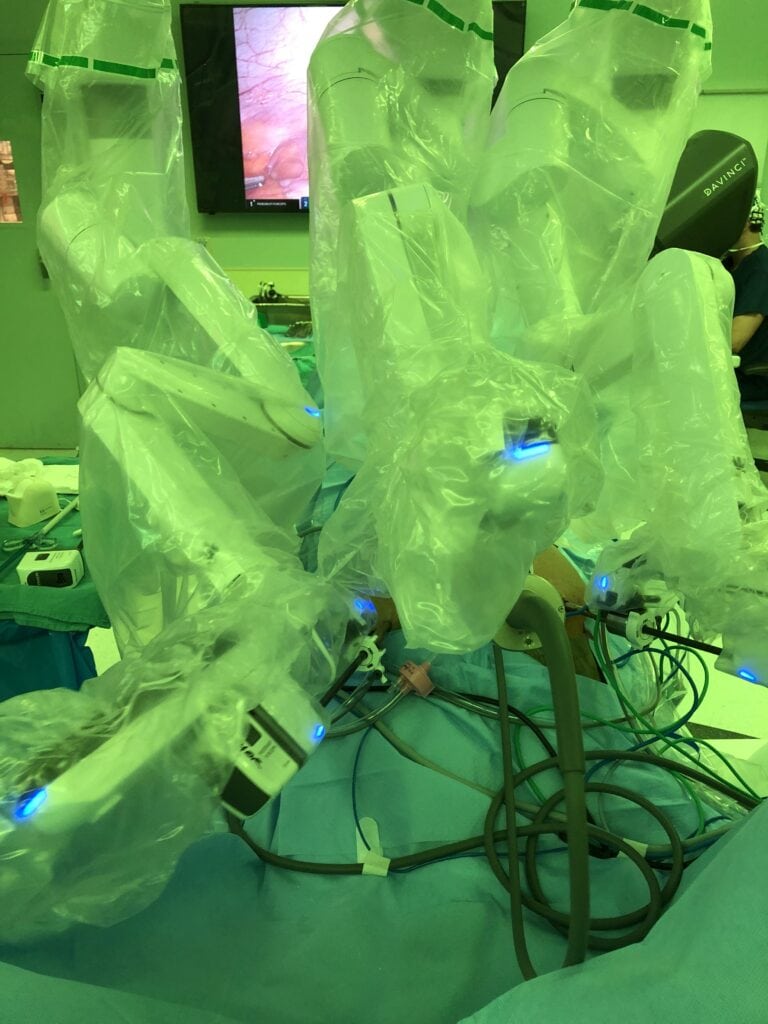
With Robotic Hernia Surgery, mesh is always used to repair the defect. In my case, mesh was placed in both inguinal areas. The mesh is rolled and placed through one of the ports by the surgical assistant, then grabbed and positioned by the surgeon. It is then tacked in place, and the internal tissues sutured over it.
My umbilical hernia was repaired at the same time, also using mesh.
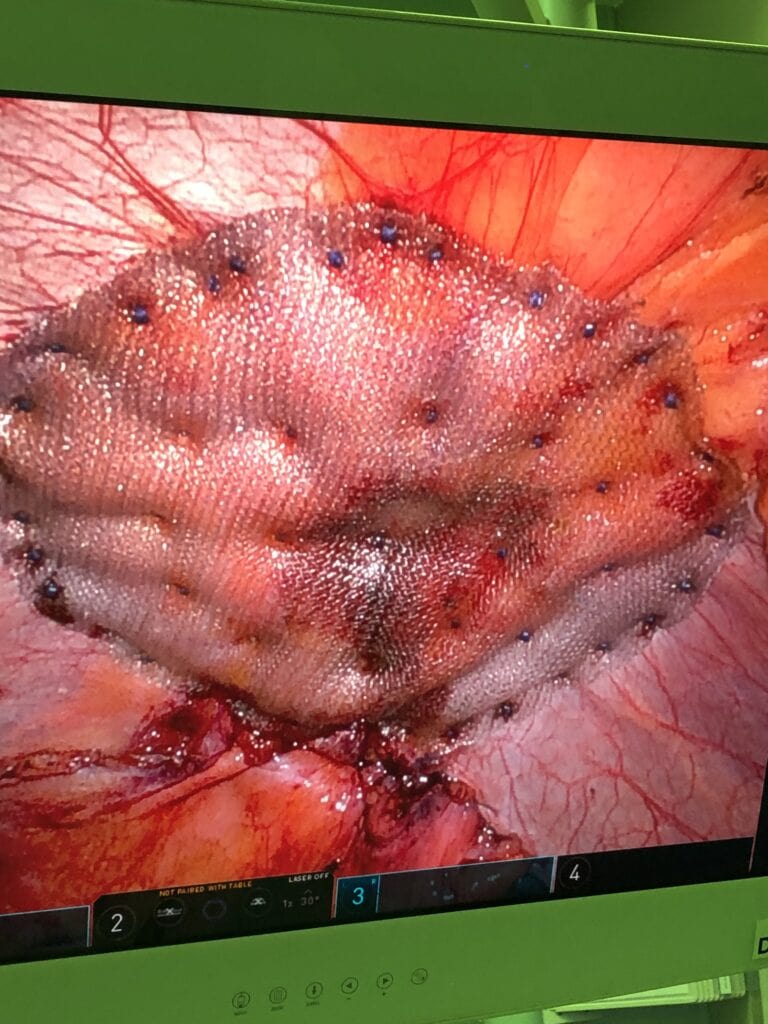
Right in the center of the mesh is the inside of my belly button, and the mesh is tacked down to the abdominal wall.
Robotic Hernia Surgery: It Is A Game Changer
My recovery was easy despite having multiple hernias repaired simultaneously. I was back to work in a week, with only occasional bouts of discomfort and swelling. As with any inguinal hernia surgery, there will be swelling in the genital region, which can sometimes make it harder to urinate, especially if there is prostate enlargement. Fortunately, I did not have that problem.
If you’ve been putting off hernia surgery, wait no more. Robotic Hernia Surgery is a safe and effective treatment with minimal complications, pain, and risk of recurrence.
For more interesting health articles, check out Manopause.com!



